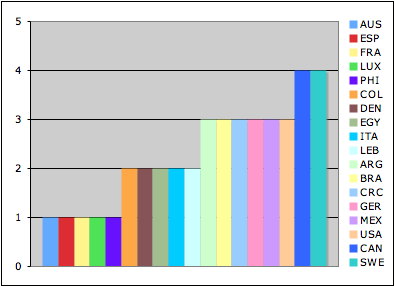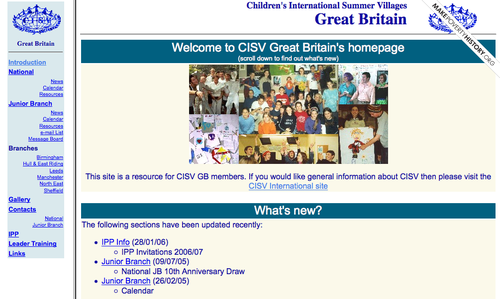- the sheer amount of e-mails coming in daily makes it difficult to distinguish between more and less important information
- once in the inbox it's not always easy to find information again
- some ways of collaboration such as drafting a document via e-mail is annoying.

What is commonly perceived as Web 2.0 offers a range of opportunities to improve the way CISV works:
- Google Docs and other providers offer easy ways of sharing and updating documents
- Microsoft Sharepoint is CISVs intranet of choice and contains all kinds of communication tools.
- Wiki software lets anybody contribute information
- Blogging software lets anybody (like me) create a virtual "megaphone" to the CISV world
- Facebook helps managing CISV networks.
The list could go on and on.
Now, the real question is, how can CISV "capitalize" these tools in order to become a better working organization? Just recently McKinsey, a consultant agency, published a report on how to make Web 2.0 work for organisations. I strongly suggest reading the document, which you can download here:
In the report they list 6 ways, some of which I found very interesting:
- Web 2.0 is not just bottom-up: Often understood as a grassroots concept, the best results are achieved, if there is support from the top.
- Integrate Web 2.0 into the regular work flow instead of making it a parallel structure.
- Encouraging and rewarding contributors yields good results.
Up to here this post has been very theoretic, so let me spice it up with some more practical suggestions:
- Let's turn our guides into websites with moderated comments. Anybody can search, annotate and discuss the way we run camps on a website. The respective committee monitors the discussion and implements suggestions into the next official version of the guide.
- Let's create a Wikipedia for CISV activities. Some icebreakers can already be found in JBpedia and I know that Arno (GER) already created something called "Actipedia". Also there is the official Activity Database, which is very hard to use. I think this project needs a collaborative effort anew to become a really useful tool.
- Let's create an interactive "camp managment application": Once a chapter decides to host a camp, it logs on to a specific website and registers this camp. The website (or -service) then automatically walks the chapter board and staff through the process of planning, running and evaluating the camp. Reminders and checklists are automatically created. Feedback can be given all along the way by anyone involved in the process. If this application is useful and widely adopted, it could even be used to monitor progress by the IO or international committees.
With some more brainstorming you could probably come up with more ideas on how to make Web 2.0 work better for CISV. I do think that we are already pretty o.k. at adopting new technology - yet there's room for improvement.



